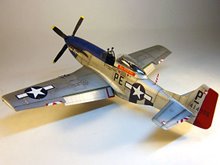RC planes are also divided into different types of kits and construction. Some kits are mostly foam or plastic, or can be balsa wood. More robust designs may use solid sheets of wood for construction and because of the weight only powered RC planes would have this kind of construction (not gliders). Like I said, RC planes are designed according to the same principles as full-sized aircraft, although RC planes rarely use metal structures.
Ready to fly kits (RTF) come as pre-assembled, usually requires only wing attachment or some other simple assembly. You can buy this kit and have it flying in a few minutes. This would be a good starting point for beginner hobbyists. Ready to fly planes are a point of controversy among more experienced hobbyists because they consider that RC plane assembly is a integral part of the hobby.
Almost ready to fly kits (ARTF) are similar to RTF kits, but it usually requires more assembly and some basic construction. Still, these kits can be built in 4 or 5 hours, unlike traditional kits which require 50+ hours to complete! So, most often ARFT kits contain fuselage and appendages, but they require separate purchase and installation of servos, motor(gas or electric), speed controller and sometimes control rods. And this is the advantage of ARTF kits, they allow you to build them any way you want it. And also, if you already have these components, ARTF kit is the best choice if you want only an airframe.
Balsa kits are designed for hobbyists with more experience. They contain raw assembly material and some spare parts. These kits require many work hours to be completed and needless to say that only one error made during assembly could compromise the model's flying characteristics, or even worse, render it impossible to fly at all. It would be really unfortunate if that happened after many hours of assembly. That's why beginner hobbyists prefer RTF's or ARTF's. Balsa kits are appreciated among more experienced hobbyists because balsa kits combine interesting model assembly with enjoyable and fun flying that comes afterwards.
Last, but not the least are RC planes built from scratch. This is a really long and complicated method. Of course, it allows the hobbyists complete freedom in terms of customization, but it also requires some knowledge of aerodynamics. Many times drawings of full sized airplanes are scaled down, or even designed completely from scratch.
Wednesday, November 01, 2006
Subscribe to:
Post Comments (Atom)

No comments:
Post a Comment